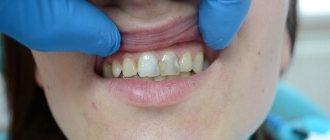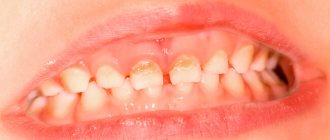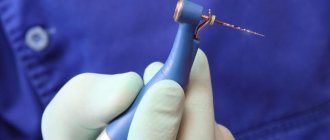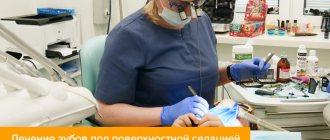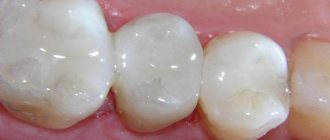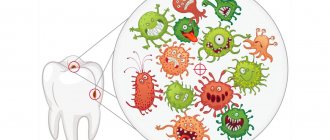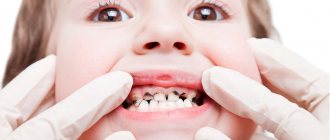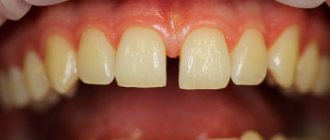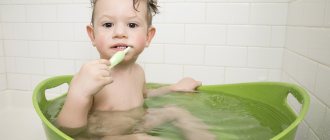Why do babies get caries?
Yes, caries in children under 3 years of age still surprises parents. "How so? After all, the baby doesn’t even know cigarettes and soda yet?” - they shrug their shoulders. In fact, there are two main groups of reasons for the appearance of caries in babies: poor lifestyle during pregnancy and insufficient oral care for the child after birth. Let's look at each group separately.
Pregnancy
The expectant mother should be especially attentive to herself. The baby's teeth begin to develop around the 12th week of pregnancy. It is important for a woman to understand that the process of feeding a child is a process that begins with conception.
For the health of the baby’s teeth, hair, nails, skin and other organs, the expectant mother should choose natural products that contain the daily requirements of essential vitamins and minerals:
- Dairy
. First of all, the expectant mother should choose cottage cheese, natural yogurt and hard cheeses. These treats contain calcium, protein, vitamins B, D, and Omega-3 polyunsaturated fats that baby’s teeth need.
- Nuts
- This is a storehouse of vitamins and nutrients necessary for the formation of teeth in a baby. Nuts contain selenium, magnesium, vitamin E, phytic acids and Omega-3 polyunsaturated fatty acids.
- Fish and seafood
. Everyone knows that fish contains the phosphorus needed by bones and teeth and beneficial vitamin D, which strengthens the nervous system of a pregnant woman and baby.
- Meat, liver
. Important cell building materials are meat and liver. These products contain the protein necessary for a growing body. The liver is rich in iron and B vitamins.
- Chicken and quail eggs
. These products contain more than 10 useful vitamins and microelements that affect the growth and abilities of the baby.
- Vegetables
. Vitamins, fiber, microelements and organic acids necessary for the development of healthy baby teeth are found in abundance in vegetables. Avocados, broccoli and carrots are especially useful for the expectant mother. These vegetables (in any form - raw or cooked) contain the most calcium, vitamins B, C and folic acid.
- Berries and fruits
– vitamin support for pregnant women and the key to the normal development of the child.
- Legumes
contain iron, folic acid and vitamin B-6, necessary for mother and baby.
- Cereals
rich in B vitamins, fiber and iron. Milk porridge will be very useful.
- Spinach.
The plant contains a lot of folic acid, calcium and vitamin A. In addition, the leaves are not at all difficult to grow at home on the balcony, and then enjoy them in the form of soups, purees and side dishes.
And, of course, the expectant mother should avoid taking antibiotics: such drugs can destroy the child’s health.
Why does the disease occur?
Deep caries can appear in children from three, or even from two years old, if the previous stages of the disease were left unattended.
There may be several reasons.
- An unhealthy lifestyle for the expectant mother is smoking and drinking alcohol in the first trimester of pregnancy.
- The consequence of infections and severe toxicosis.
- Prematurity.
- Infectious diseases suffered by a child in the first months of life.
- Malocclusion.
- Dental caries in the baby's parents.
- Frequent feeding of the child with pureed foods, lack of solid foods in the diet, which leads to insufficient saliva production.
- Excessive amounts of sweets, which promotes the proliferation of pathogenic bacteria, carbohydrate fermentation processes and the formation of lactic acid.
- Lack of foods with phosphorus, fluorine and calcium in the diet, which leads to demineralization of teeth and their gradual destruction.
- Insufficient hygiene. Neglecting simple rules - brushing your teeth twice a day and rinsing your mouth after eating - also negatively affects dental health.
Oral care
Caries in children aged 2-3 years can also develop due to the inattentive attitude of parents. Let's look at the main mistakes that moms and dads make:
- Pacifiers and bottles in a dream.
To teach a child to sleep alone, parents give him a pacifier or even a bottle of milk at night. As a result, the child enjoys the sweet taste of the drink all night, and the teeth are slowly but surely destroyed. Such a habit, of course, will give mom and dad healthy sleep, but in the baby it can lead to bottle caries and malocclusion.
- Sweet life.
Of course, most kids are unfamiliar with the problem of excess weight. Therefore, grandparents strive to treat the child with additional cake or candy. And, as you know, bacteria on enamel love sugar with a tender love, and very soon children under 3 years old develop caries, which requires treatment.
- Insufficient dental care
. Many parents believe that there is no need to care for baby teeth at 2-3 years of age. As a result, plaque accumulates, and carious monsters spread over both grown and still growing teeth.
Symptoms of caries in babies
It can be difficult for parents to notice that their child’s teeth are affected by caries. Dentists distinguish several stages of the development of the disease:
- Initial.
Subtle white spots appear on the baby's teeth. These spots can be large or very small, round or rectangular. The child does not experience any unpleasant sensations at the initial stage. Therefore, parents who do not examine their children's teeth skip this stage, and the enamel continues to deteriorate.
- Superficial
. At this stage of caries, teeth change more noticeably: dark spots appear on the top layer of enamel. Some children complain of pain when eating irritating foods (sour, salty and sweet). The enamel is damaged, the tooth cavity opens to bacteria.
- Average
. Caries bacteria reach the dentin (the tissue located inside the tooth). The baby complains of pain when eating foods that are too cold or too hot.
- Deep.
In children, deep caries is much more difficult than in adults. Most of the internal tissue of the tooth is damaged, and pulpitis develops sharply.
Unfortunately, in children under 3 years of age, unlike adults, caries often affects all teeth at once. Several holes may appear on one crown from different sides at once. Therefore, parents need to be extremely attentive to their children and devote time to oral care even before the first tooth appears.
Ways to correct a gap between a child's teeth
Eliminating diastema is not so difficult. The many ways to correct gaps between a child's teeth give parents and dentists a wide range of choices. Depending on the width of the gap, individual characteristics and financial capabilities, correcting the anomaly will take some time (from 1 procedure to several years). Among the treatment options for diastema, you will see the most common dental procedures. So, below we present a list of methods for returning teeth to their natural healthy position.
Braces are considered the most common and widely available way to correct a malocclusion. Gradual straightening of the teeth allows the gap to be eliminated. It is best to install braces in childhood, since bone tissue is at the stage of formation and is easier to change. If you install braces in adulthood, you need to be prepared for the fact that after completing the course of wearing braces, you will need to wear a retainer for a long time to consolidate the effect and rebuild muscle memory.
Braces to eliminate gaps between the front incisors are a safe and gentle way to achieve a beautiful, straight smile.
Another way to correct the position of teeth is plates . They belong to the category of removable structures and are designed mainly to be worn by children under 12 years of age. The removable nature of the plates simplifies the process of orthodontic treatment compared to braces, however, if the gap between the incisors is large, the plates will not bring the desired effect.
mouthguards are the dream of many patients, because they are made of transparent material individually in each case and are designed to be worn for several hours a day. Clear aligners have the same effect as braces and plates, but are not suitable for severe overbites.
Another method is to install veneers and crowns on the front teeth. This solution to the problem of diastema does not require a long process of correcting the bite. In this case, the dentist selects a shade of veneers that completely matches the natural shade of the patient’s tooth enamel, which makes the teeth straight and well-groomed, closing the unaesthetic gap. Before installing veneers, you will have to carry out some preparatory work - grinding the teeth.
If the diastema is mild, the dentist may suggest improving the quality of your smile with a cosmetic filling that reduces the gap between the teeth. There is a more aesthetic and modern way to eliminate the gap - artistic restoration. It consists of building up teeth using a composite filling material. After such procedures, care must be taken when chewing hard food and actively using the front teeth while eating.
If the cause of the diastema is an anomaly in the frenulum of the upper lip, an operation to plasticize it is necessary, and then correct the position of the teeth or mask the gap in any way.
Treatment of caries in children under 3 years of age
The method of treating caries in children under 3 years of age depends on the stage of the disease, the individual characteristics of the child and, of course, his attitude towards dentists.
- At the stain stage, the doctor removes plaque and remineralizes the enamel using solutions or silvers the teeth.
- Superficial, medium and deep caries in children 1-3 years old (and older) are treated using a drill. If necessary, the doctor uses anesthesia. If a child suffers from aching toothache, canal depulpation is performed.
Remineralization
Remineralization is the restoration of damaged tooth enamel. To carry it out, the doctor cleans the surface of the affected area, and then covers the rows with a special composition with fluorine and calcium. The procedure is absolutely painless, most children tolerate it easily.
To avoid the development of caries in children, dentists recommend repeating remineralization every six months.
Silvering
This method enhances the protective abilities of enamel and is recommended for children who are afraid of dentists. The surface of the teeth is coated with silver nitrate. The substance provides a reliable antiseptic effect, but parents should be mentally prepared that after treatment the child’s teeth will turn black.
Sealing
For children over 1 year old, the dentist can fill damaged teeth. This treatment does not necessarily require the use of a drill. If the caries is shallow, the doctor applies a special solution with acid to the tooth. The substance corrodes the affected tooth surface, disinfects the carious cavity and applies photopolymer material.
If a child comes to the doctor with deep caries, it will not be possible to do without drilling. Before starting treatment, the doctor gives the baby anesthesia, since baby teeth have nerve endings.
Treatment of caries in children 2-3 years of age and older can be supplemented with procedures such as
- preparation or opening of a cleaned carious cavity;
- depophoresis – introduction of an electric current of copper-calcium hydroxide ions;
- ozone therapy - treatment of carious cavities using a jet of ozone gas;
- photodynamic therapy – application of a special medicinal paste to a carious tooth and subsequent laser treatment of the area.
Pulpitis of permanent and primary teeth in children and adolescents
Pulpitis is inflammation of the dental nerve. It is especially dangerous for primary occlusion, as it develops rapidly and in advanced cases can damage the rudiments of molars. Experienced dentists treat pulpitis in order to eliminate the problem that has arisen carefully and painlessly for the child.
Plaksina Margarita
For pulpitis, I recommend treatment with nitrous oxide to patients. Sedation allows you to relax - it removes fear and anxiety. The child sits calmly in the chair for the required time and withstands all manipulations perfectly.
Causes of pulpitis in children
Pulpitis in a child is a full-fledged hole in the tooth, pain and sometimes even fever. Such an unpleasant disease can occur for many reasons:
- Dental caries - untreated caries contributes to inflammation of the pulp.
- Mechanical injury - when hit, falling, or biting something hard, the crown is damaged, which provokes the rapid development of pulpitis.
- Unsuccessful treatment of caries is a rough mechanical impact that can be caused by a doctor without experience or when working on outdated equipment.
- Acute infectious disease - infection of the pulp through the blood.
Pulpitis of primary teeth
Pulpitis of baby teeth is especially dangerous. After all, we are not talking about damage to the enamel, but about the destruction of dental tissues, the dangers for teeth of a permanent bite.
Baby teeth are structured differently than molars. Temporary units have small roots, thin enamel and large pulp. This structure leads to the rapid flow of caries into pulpitis. Treatment is complicated by the small size of the baby teeth themselves - the doctor must have good experience and carefully and accurately carry out all the necessary manipulations.
The second feature of milk pulpitis is the rapid transition from the acute stage to the chronic stage. In this case, pulpitis, invisible to the child, will continue its destructive work - it will spread to neighboring units and may threaten the eruption of a permanent tooth.
Plaksina Margarita
The most experienced dentists treat pulpitis of primary teeth. I understand that the child is in pain and is afraid, so I do everything to increase the comfort of the young patient. Conversations, funny stories, toys and cartoons help reduce anxiety and carry out treatment without whims and tears.
Types and symptoms of childhood pulpitis
Doctors distinguish between two stages or forms of pulpitis - acute and chronic.
Acute reactive pulpitis is characterized by:
- severe sharp pain - pain radiates to the ear or head;
- deterioration in quality of life - the child eats and sleeps poorly;
- an increase in body temperature and swelling of the lymph nodes.
Sometimes pulpitis of dental tissue goes unnoticed and quickly enters the chronic stage. This course of the disease is especially typical for baby teeth, so dentists always insist on systematic planned appointments.
Chronic pulpitis is:
- minor rare complaints from the child;
- bad breath;
- quick diagnosis at the dentist.
Upon examination, the doctor will find a hole - a carious cavity with softened dentin. Such a tooth needs to be treated urgently.
Methods for treating pulpitis in children and adolescents
In pediatric dentistry I use three main methods for treating pulpitis:
Conservative method
The pulp is preserved and the canals are washed with antiseptic compounds. A paste with a high calcium content is placed into the pulp chamber. The hole in the child's tooth is then filled.
Partial pulp removal
The affected coronal area of the pulp is removed, the cavity is cleaned and washed. To eliminate inflammation, a medicinal composition is placed in the diseased tooth. After eliminating the inflammatory process, the hole in the tooth is filled.
Depulpation
The pulp is completely removed, the cavity is washed and treated. Treatment is completed by filling the canals.
Plaksina Margarita
When treating pulpitis in Aza&Buka dentistry, they do not use pastes containing arsenic. Only gentle techniques and the most modern drugs. Children's milk and permanent teeth remain as beautiful and snow-white as they should be.
Prevention of pulpitis in children
Prevention of pulpitis is similar to the general rules of oral care. Adults should protect the child from excess sweets in the diet and ensure timely and thorough brushing of teeth. And be sure to bring the young patient to all scheduled appointments.
Early diagnosis allows you to see both caries and pulpitis at the earliest stage of formation. Doctors can easily reduce the risk of painful holes in the teeth - at the first signs of the disease, they will quickly restore the integrity of the crown and tooth enamel.
What if you don’t treat caries in a child?
Not treating caries on baby teeth means providing your child with a painful childhood. Firstly, caries suddenly “infects” other teeth, and secondly, it almost instantly turns into pulpitis and brings excruciating pain to the baby.
Untreated teeth in children can in the future provoke such serious diseases as:
- chronic allergic processes;
- inflammation in the oral cavity;
- periodontitis;
- chronic inflammation in the mouth.
Reasons for appearance
Daily and thorough cleaning of the oral cavity is necessary; it can prevent the occurrence of caries, but does not guarantee 100% protection. Let's list the reasons that cause caries:
- the predominance of carbohydrates in the diet;
- the enamel was accidentally injured;
- poor oral hygiene;
- salivation disorder;
- weak immunity;
- gastrointestinal diseases;
- violations of the microflora of the oral cavity;
- improperly growing teeth;
- hypovitaminosis.
At the Karmen-Med dental clinic, before treatment, the true cause of dental disease is clarified with the patient and possible ways to eliminate the causes are discussed to prevent the development of caries on other teeth.
How to prepare a child for treatment?
Children intuitively feel the fear of adults and begin to be afraid of dentists even before their first glance at the dental chair. In order for the treatment of caries in a baby under 3 years old to go as smoothly as possible, it is necessary to prepare him for a visit to the doctor in advance.
- Find a trusted, good dentist who can establish contact with your child.
- Take your child for preventive examinations to the dentist, do not wait until the tooth hurts. Believe me, pain will greatly increase children's fear.
- Be calm at your doctor's appointment. Remember, all the fears of the parents are transmitted to the baby. There is no need to tell the child “don’t be afraid”, “it won’t hurt”, “like a mosquito will bite” even before he approaches the doctor.
- If your baby is already playing on his own, rehearse your visit to the dentist at home. Treat caries for a bear, bunny, or cat. Let your child get used to the atmosphere of the dental office a little.
- Tell your child that everyone goes to the dentist - mom, dad, and grandparents. And, most importantly, emphasize that visits to the doctor bring joy and relief to everyone.
- Choose a time to visit the doctor when your child is alert and cheerful. Believe me, the baby will not be happy to be in the doctor’s chair during the daytime nap or in the evening when he is already tired. By the way, during the visit the baby should be well-fed.
- If you nevertheless went to the dentist for the first time because of a toothache, convince your child that the doctor will definitely help him. Remember, the baby is already very scared, so there is no need to use the words “drill” or “acute pain”. Better tell a story about how a good doctor will save a child from carious monsters, and his teeth will become white and healthy.
We hope our tips for treating caries in children under 3 years of age will be useful to you. Teach your child not to be afraid of dentists and to take care of their teeth. May you and your children always have beautiful snow-white smiles.
And in order for a child to love brushing his teeth from a very early age, it is important to choose a tasty, high-quality toothpaste for him. ASEPTA baby toothpaste gel-paste is created specifically for children aged 0 to 3 years. The soft, sweet gel carefully cares for the child’s teeth and gums without damaging them, and the natural components of the paste provide protection against caries and inflammatory processes in the oral cavity.
The paste does not contain abrasives, fluorine, parabens, or sodium lauryl sulfate, so it is absolutely safe for crumbs. And the bright taste of “tutti-fruiti” will make brushing your teeth very pleasant for your baby.
Treatment methods for caries of anterior teeth
The treatment method is selected individually with the dentist and depends on the severity of the tooth damage, the location of the caries, and the patient’s age. If the lesion has not reached the stage of pulpitis, then the dentist uses local anesthesia to reduce sensitivity and prevent pain. In some cases, at the Karmen-Med dental clinic, specialists, after agreement with the patient, administer sedatives. Then the dentist drills with a drill and removes the caries. After drilling, a noticeable depression remains. To return the tooth to its original shape, a filling is placed.
If the tooth is severely damaged, veneers or crowns can be installed. If a large percentage of the tooth surface is damaged, the doctor may resort to removing it altogether.
Photos before and after caries treatment:
Experts' opinion
The complex composition of ASEPTA Baby toothpaste allows you to simultaneously care for your gums and teeth. The product has:
- Certificate of state registration;
- Certificate of conformity No. ROSS RU. AG81.H01070.
The paste does not contain fluoride and does not require consultation with a doctor before use. The product is safe if swallowed, as it does not contain components harmful to the health of the baby.
Sources:
- Report on determining/confirming the preventive properties of toothpaste “ASEPTA PLUS” GENTLE WHITENING” Author: doctor-researcher A.A. Leontyev, head Department of Preventive Dentistry, Doctor of Medical Sciences, Professor S.B. Ulitovsky First St. Petersburg State Medical University named after. acad. I.P. Pavlova, Department of Preventive Dentistry
- Report on the determination/confirmation of the preventive properties of personal oral hygiene products “ASEPTA PLUS” Remineralization doctor-researcher A.A. Leontyev, head Department of Preventive Dentistry, Doctor of Medical Sciences, Professor S.B. Ulitovsky First St. Petersburg State Medical University named after. acad. I.P. Pavlova, Department of Preventive Dentistry
- Clinical experience in using the Asepta series of products Fuchs Elena Ivanovna Assistant of the Department of Therapeutic and Pediatric Dentistry State Budgetary Educational Institution of Higher Professional Education Ryazan State Medical University named after Academician I.P. Pavlova of the Ministry of Health and Social Development of the Russian Federation (GBOU VPO RyazSMU Ministry of Health and Social Development of Russia)
Why parents choose ILATAN dentistry in Moscow
- Here they know how to approach a child.
- If this is the first visit, the patient will be examined and told about how important it is to cure teeth. In our clinic, the treatment procedure is quite tolerable.
- If necessary, “freezing” and light anesthesia are used.
- If the decision is made to remove it, the child is given a non-removable structure in the form of a spacer-ring to preserve space for the future permanent tooth and prevent displacement of the dentition.
The next time the children come to the appointment without fear, and most of them are happy.
To prevent the situation from reoccurring, it is important to periodically conduct preventive examinations.
Stages of caries
- At the initial stage, white spots appear on the enamel. They can be completely different in shape and size. The process of destruction of enamel can be prevented if the child is shown to the doctor in a timely manner.
- Surface. The disease develops within the enamel layer. The cavity may be light or darkened. The child reacts painfully to sweet, sour, and hot foods. The main method of treatment at this stage is filling.
- Average. The dentin tissue is affected, and the pain becomes stronger. In this case, the cavity needs to be cleaned and filled.
- Deep. Most of the dentin is affected by caries. The baby may experience severe pain.
If you do not show your child to the dentist in a timely manner, possible complications may include serious diseases such as pulpitis and periodontitis. In addition, a diseased permanent tooth may grow in place of an untreated fallen tooth.
How to prevent caries on baby teeth at 3 years old
Parents should pay close attention to the growth of baby teeth.
What rules should not be forgotten:
- Accustom your baby to oral hygiene as early as possible. For young children, the rules of brushing their teeth can be taught in a playful way.
- Use only an age-appropriate toothbrush and toothpaste. For children, it is necessary to choose toothpastes that are safe to swallow. Children under three years of age are not recommended to brush their teeth with fluoride toothpastes. This is because fluoride is an active substance and can cause problems if swallowed.
- At first, parents should supervise the teeth brushing process. The baby can swallow a large amount of paste.
- Watch your diet. A child of three years old should eat well. Choose healthy foods enriched with microelements and vitamins.
- Visit the pediatric dentist with your child twice a year.
Remember that a child’s baby teeth need the same competent care and timely treatment as their molars.
